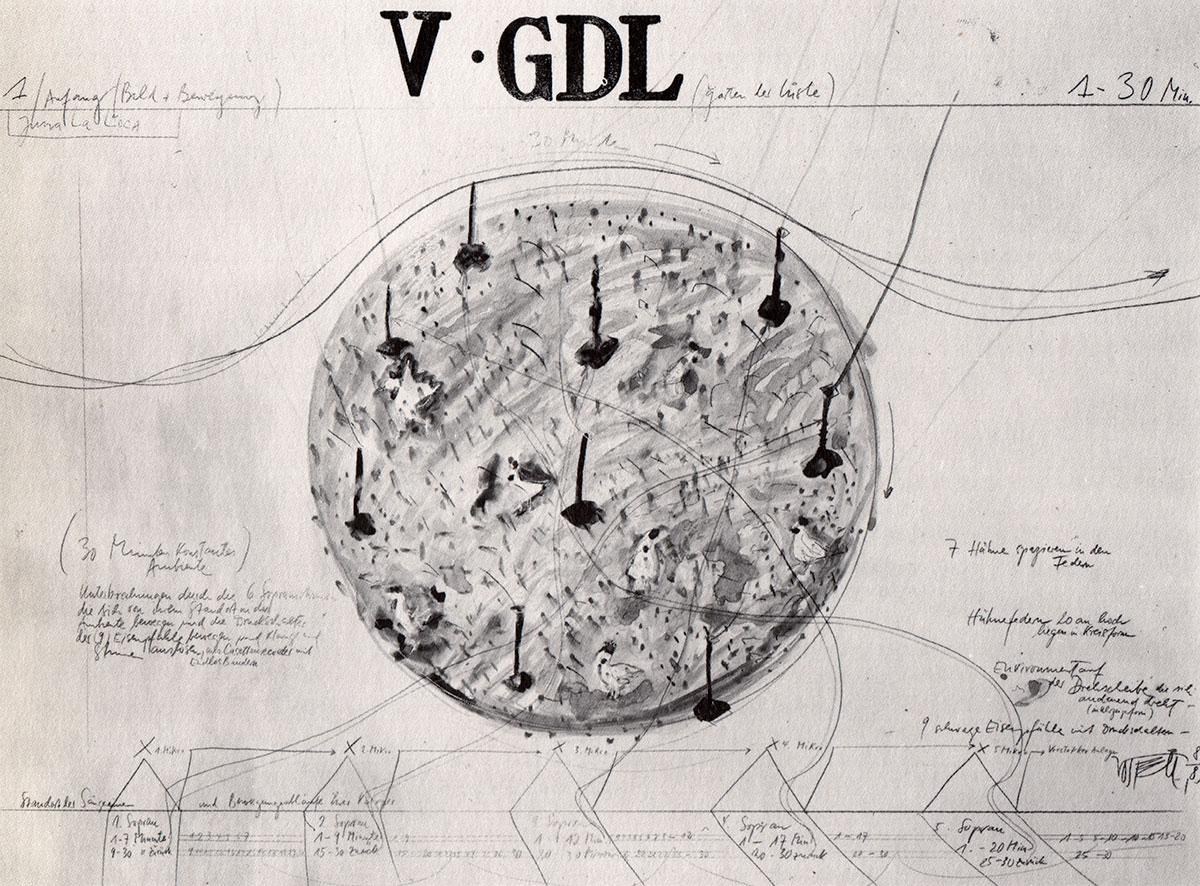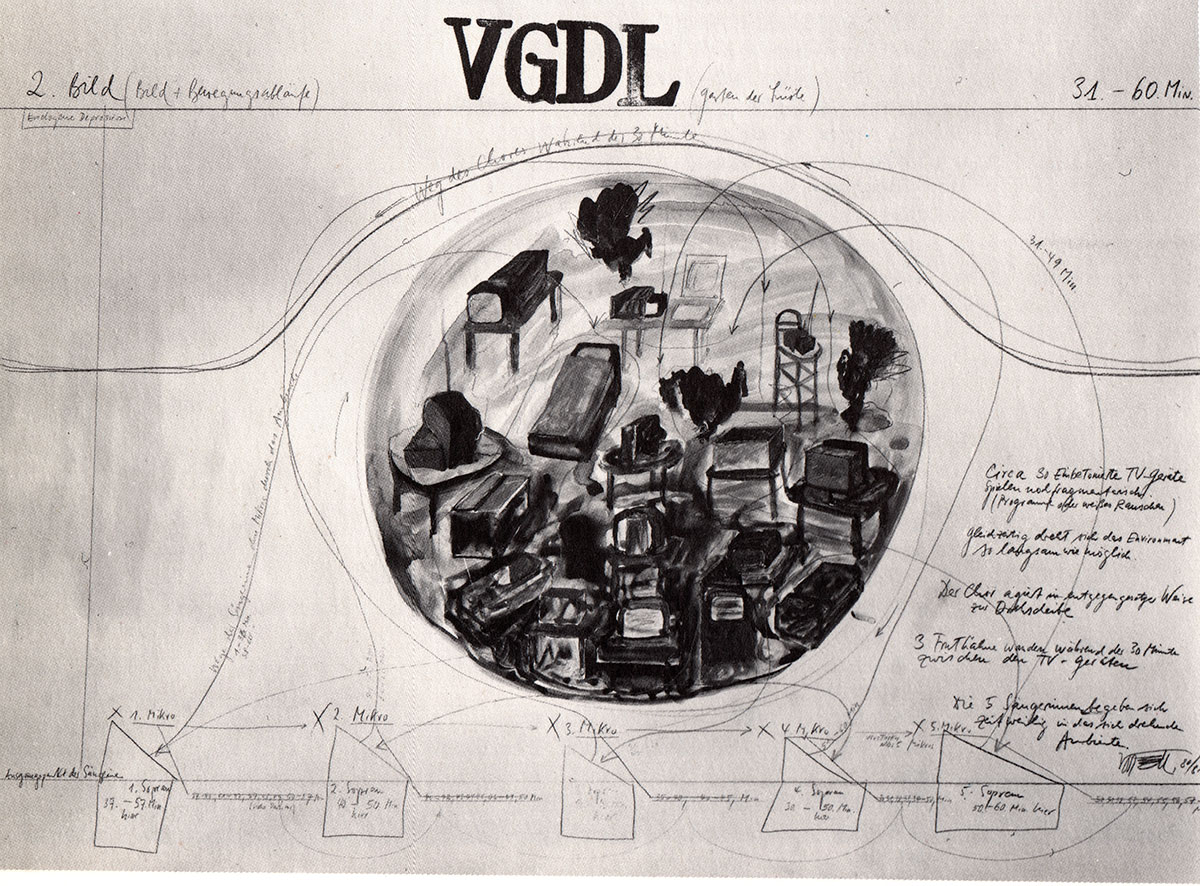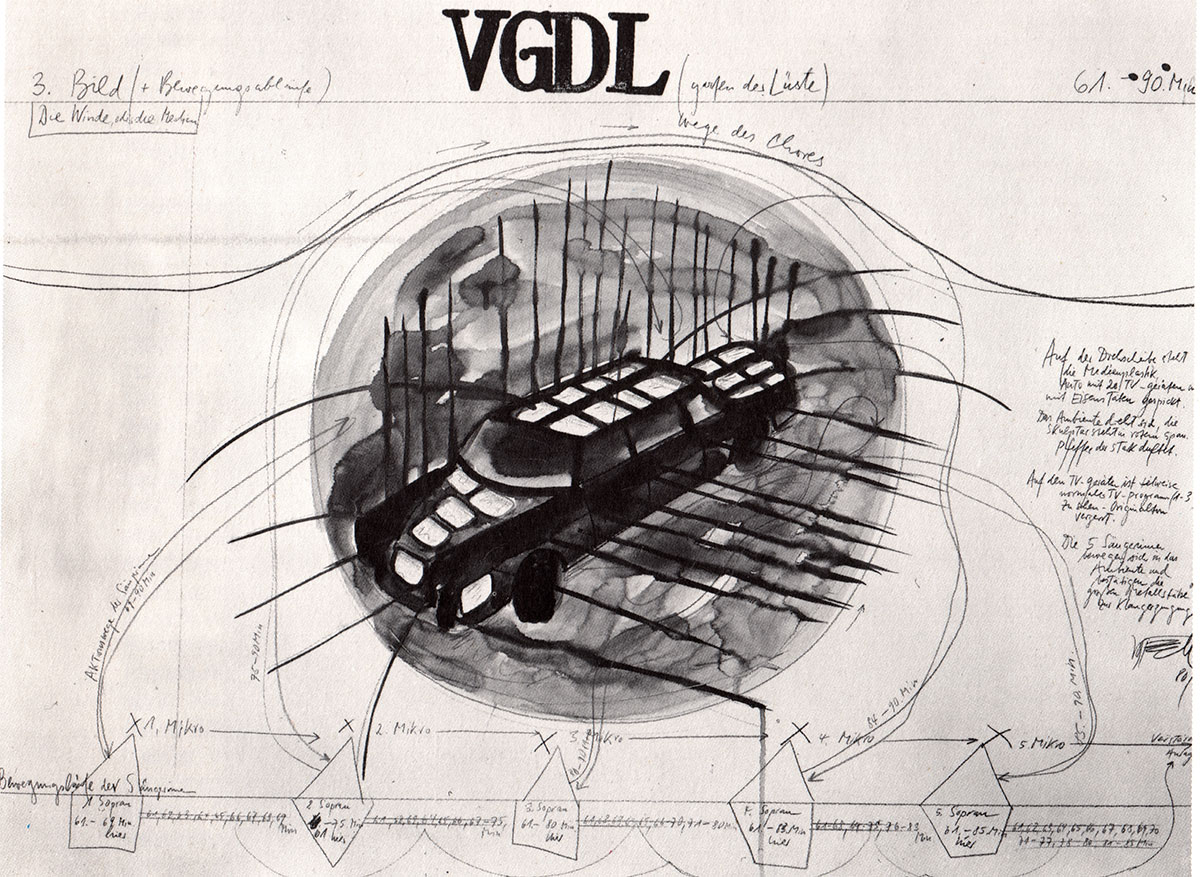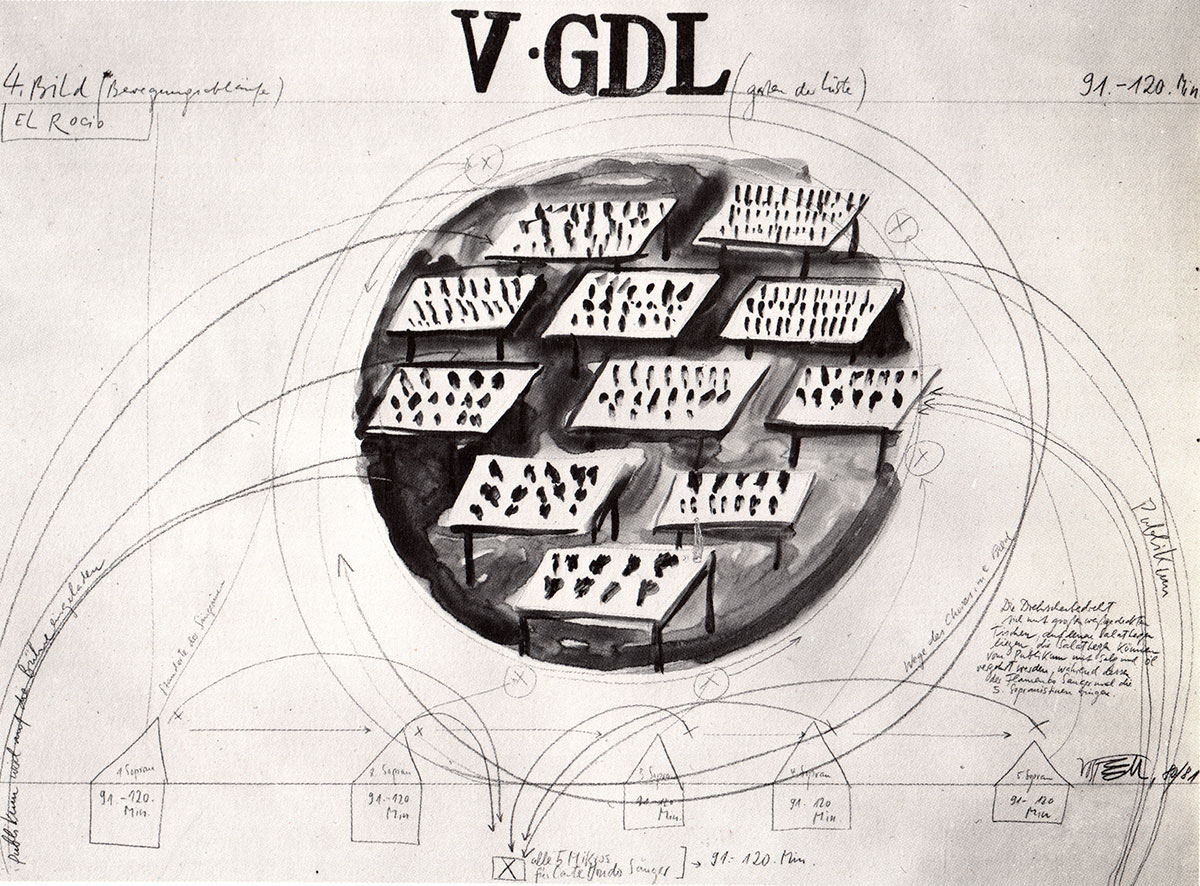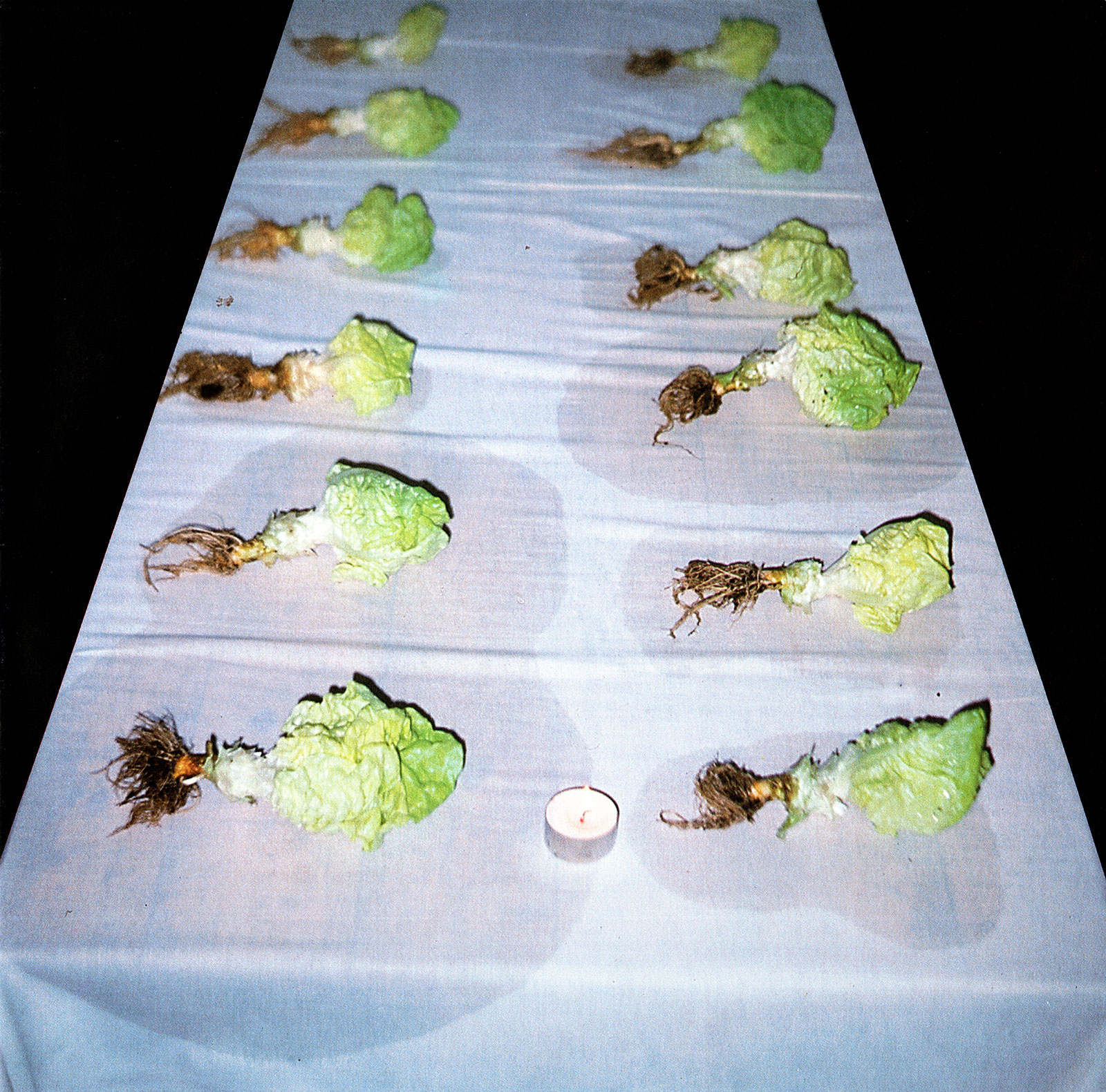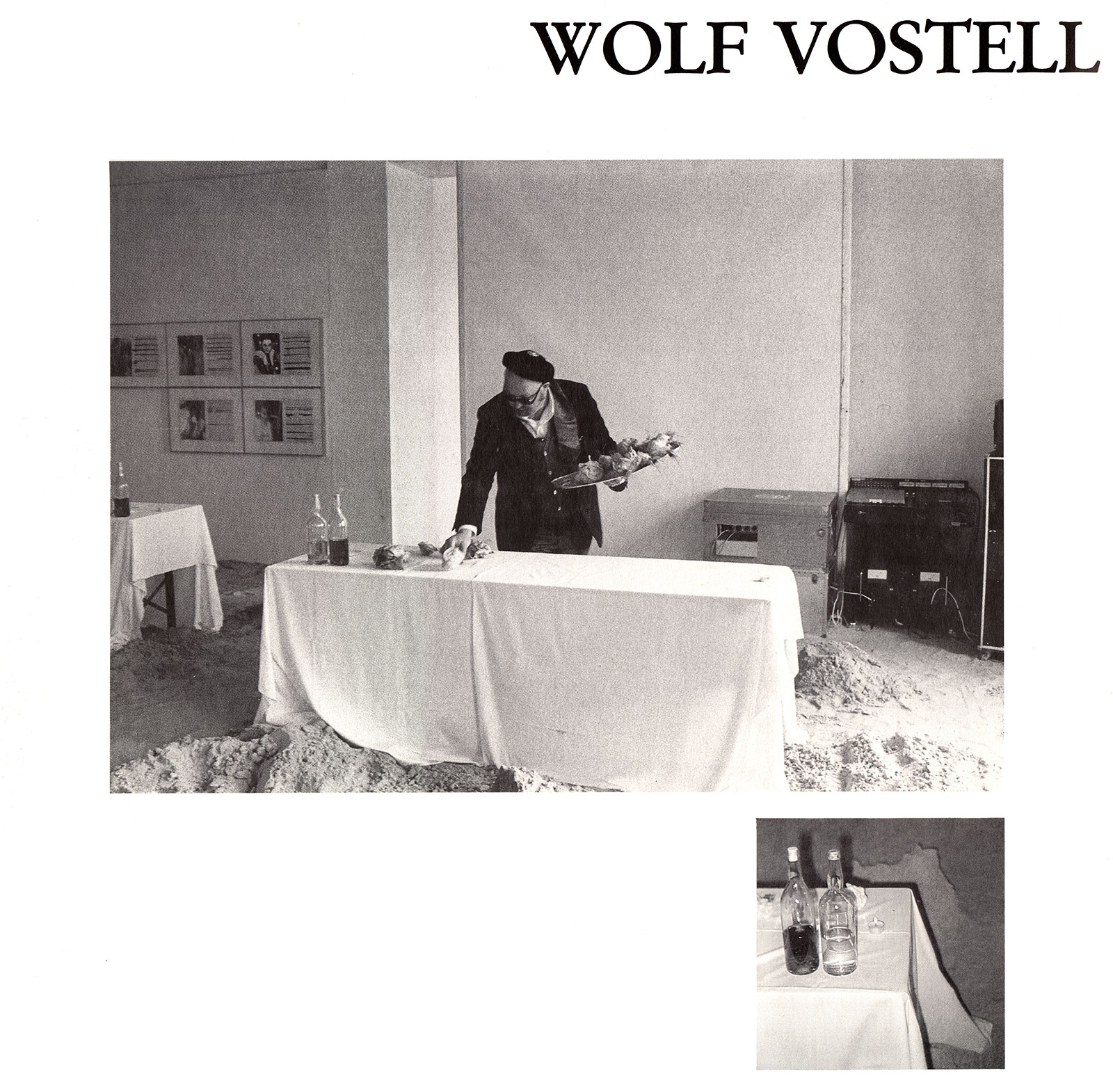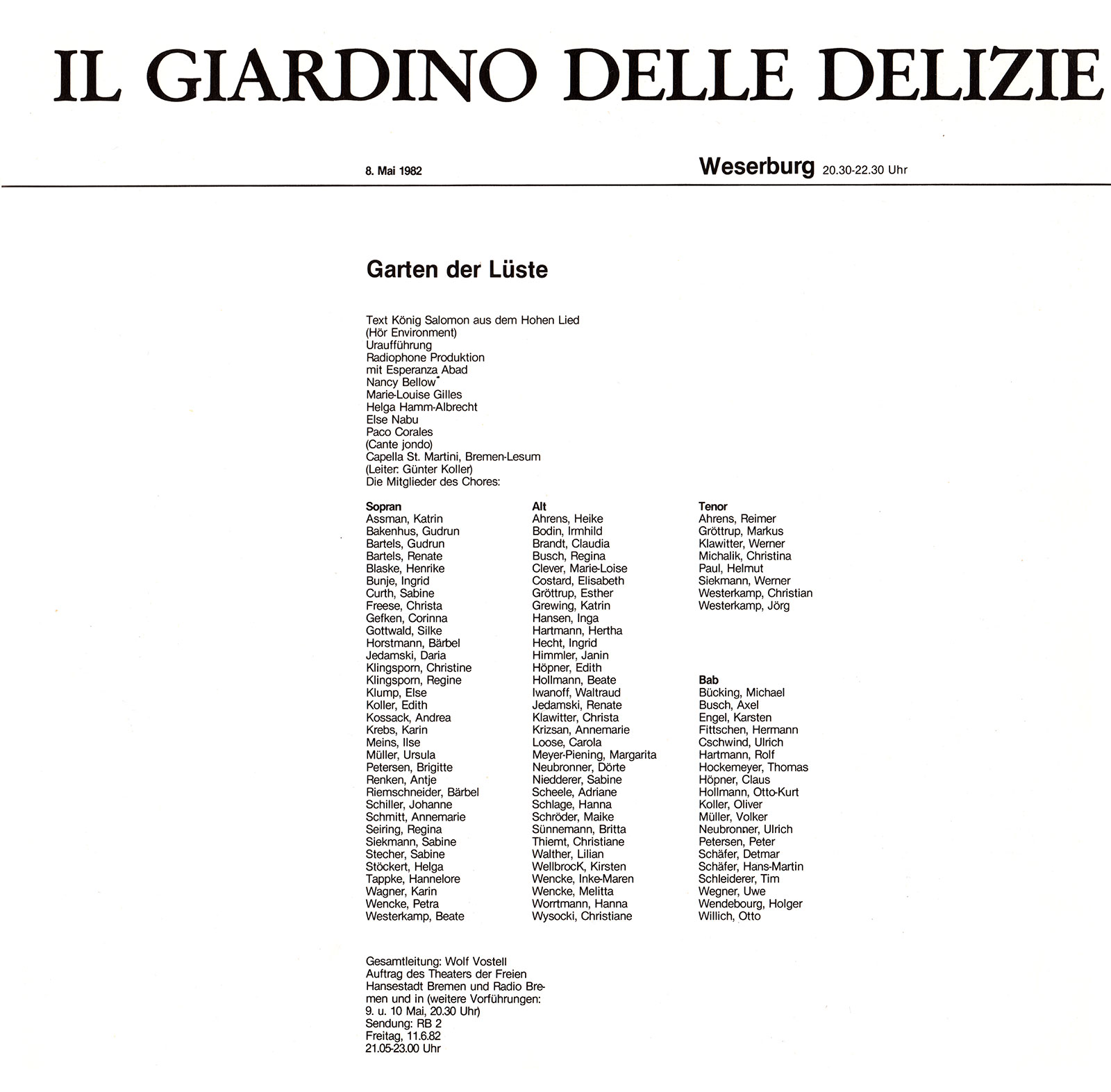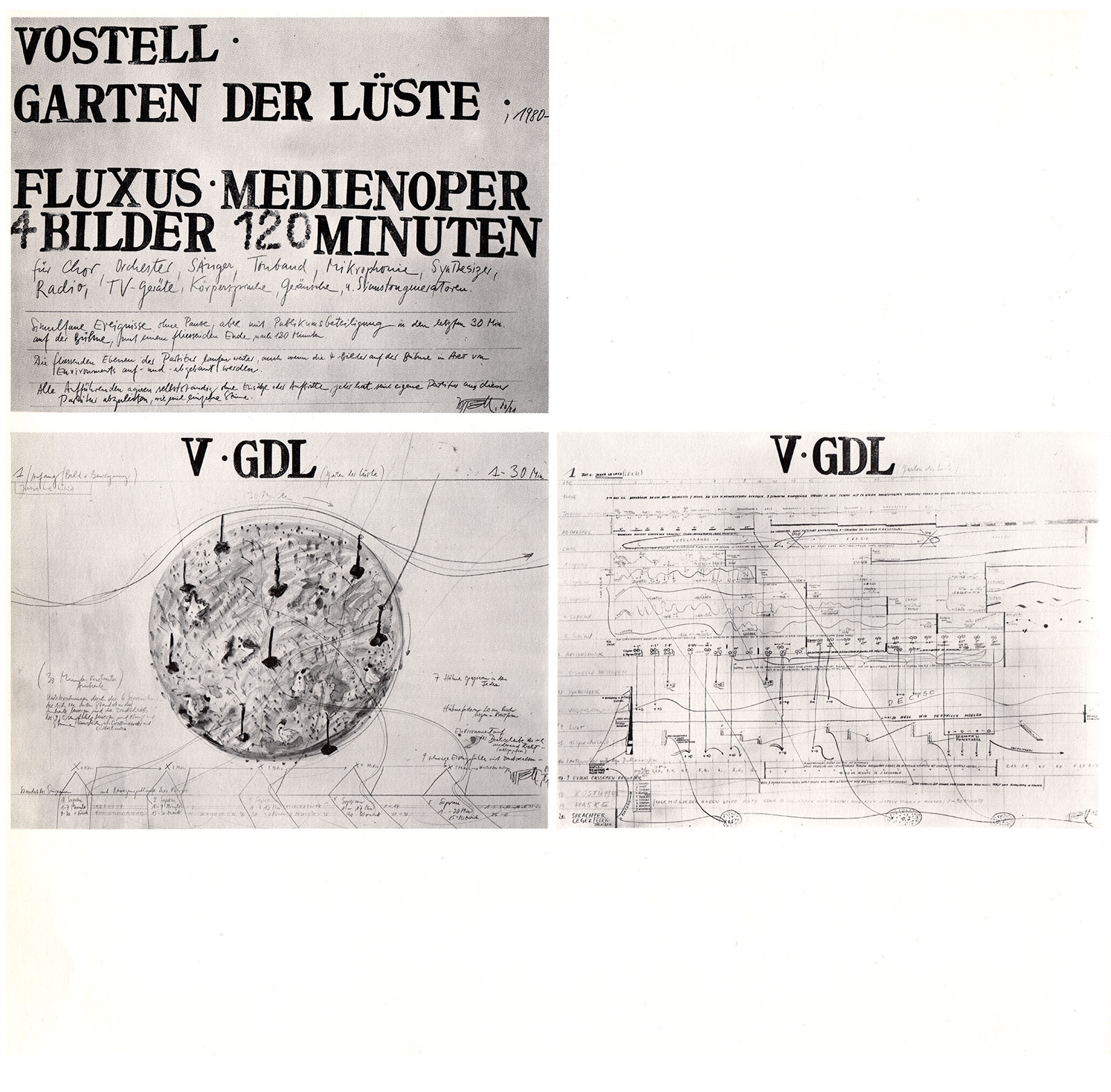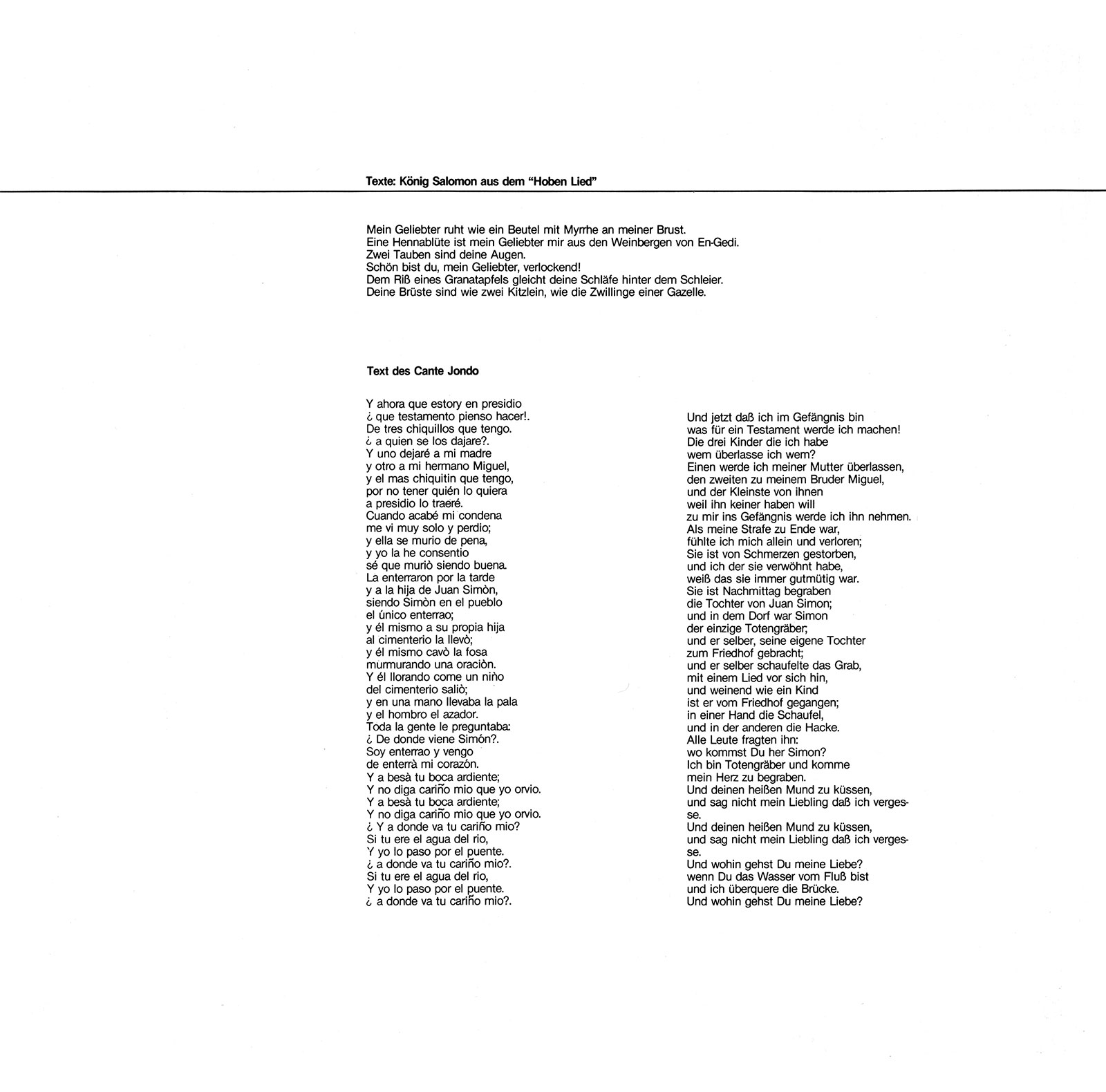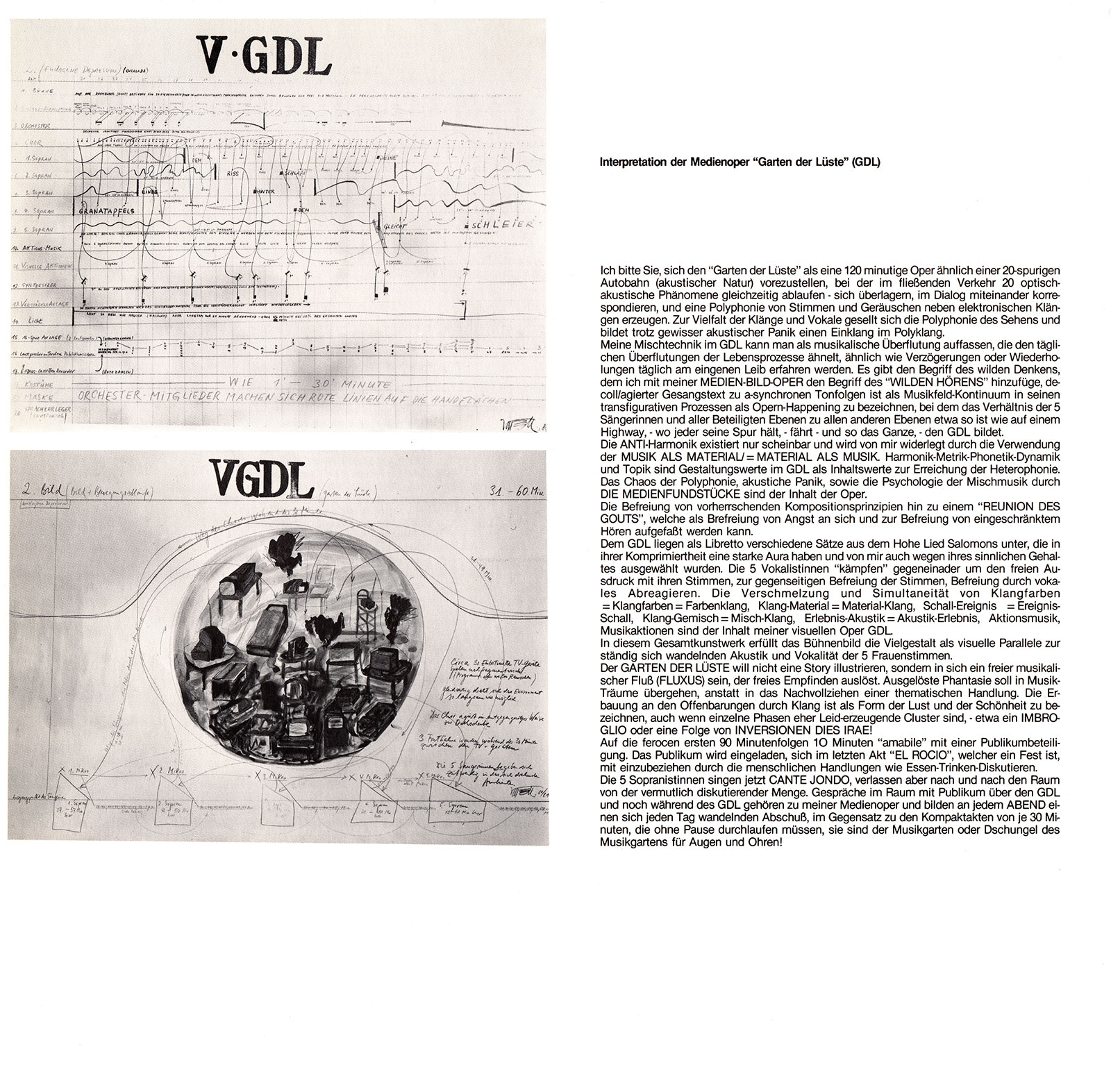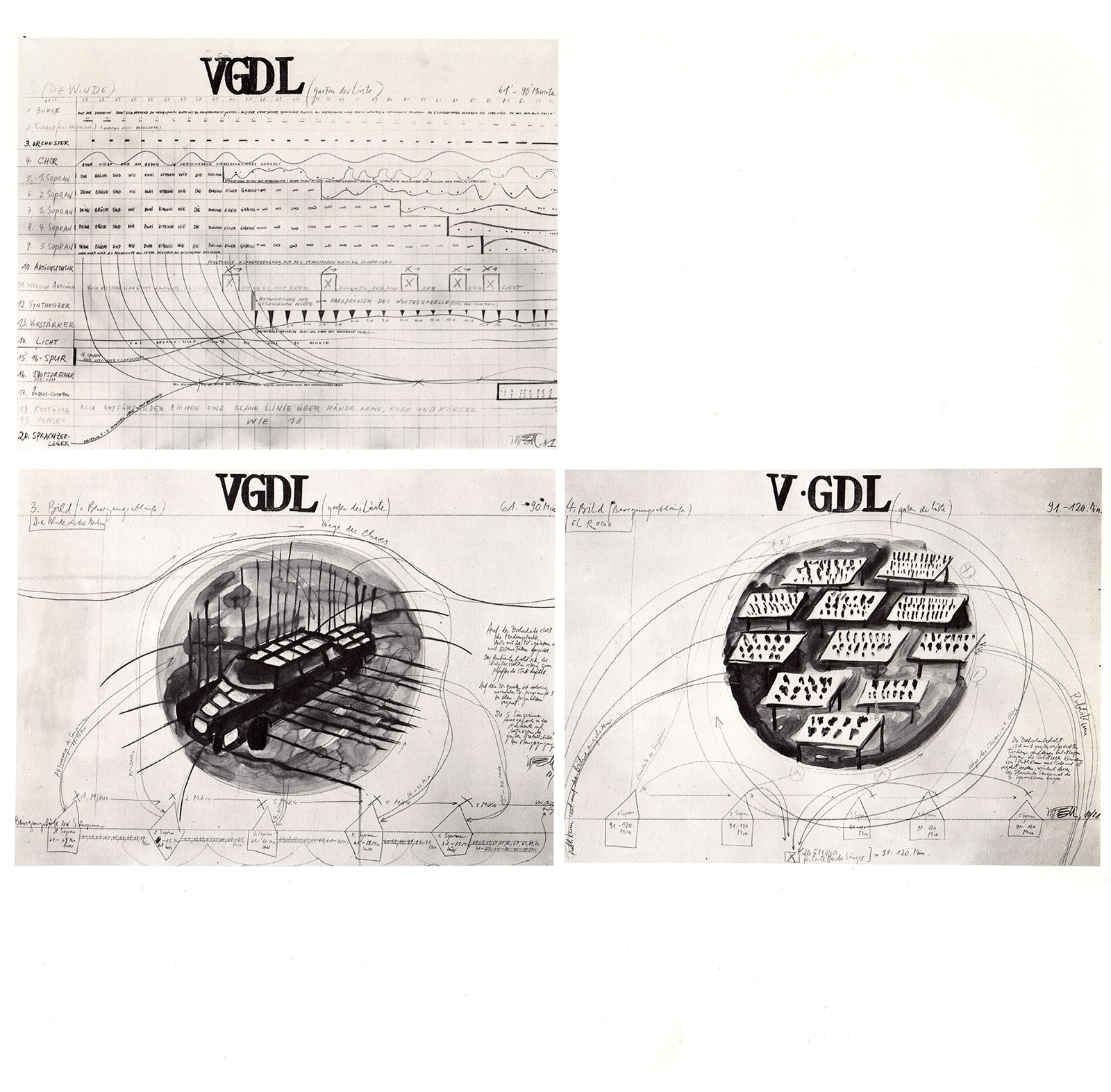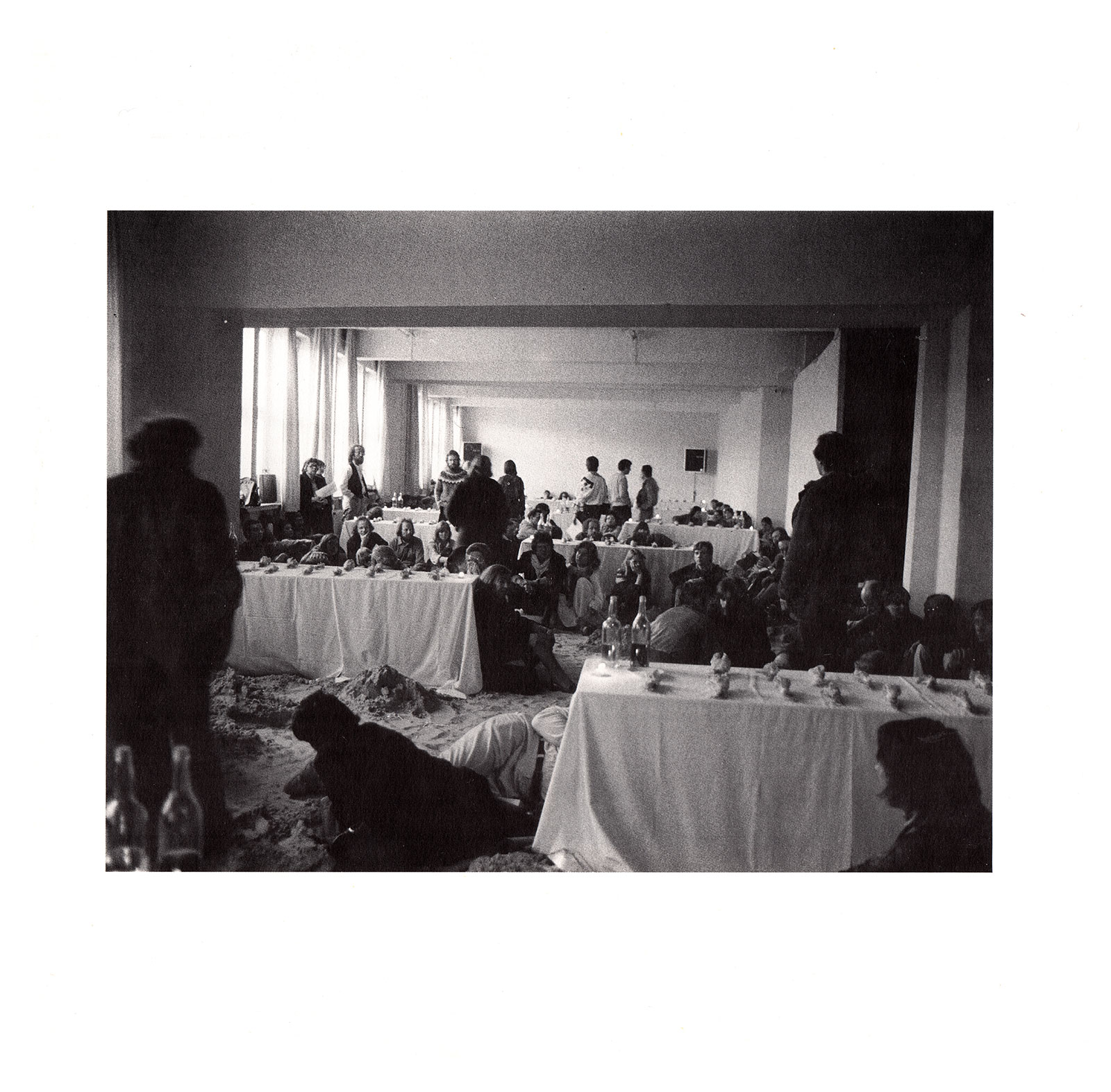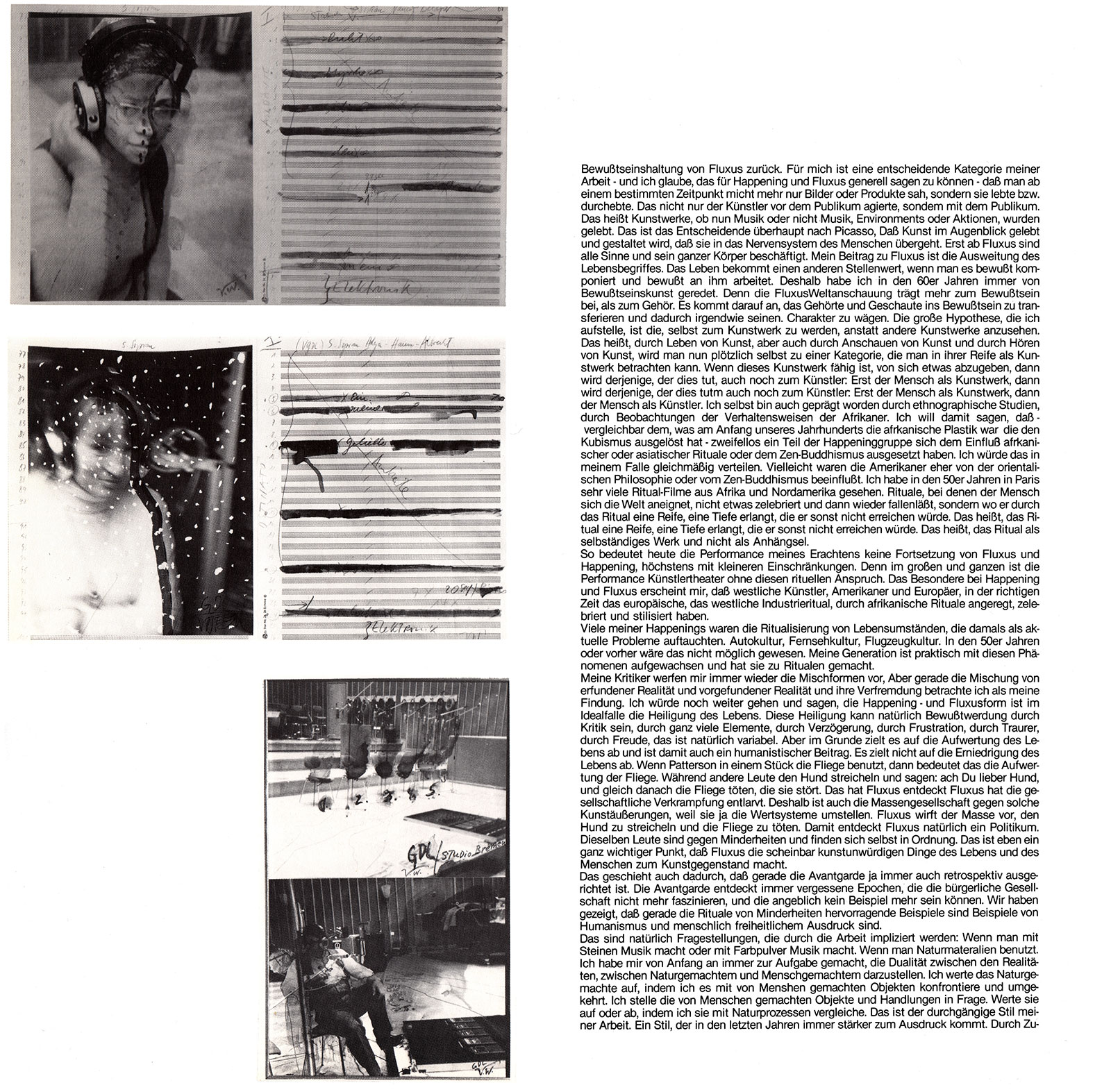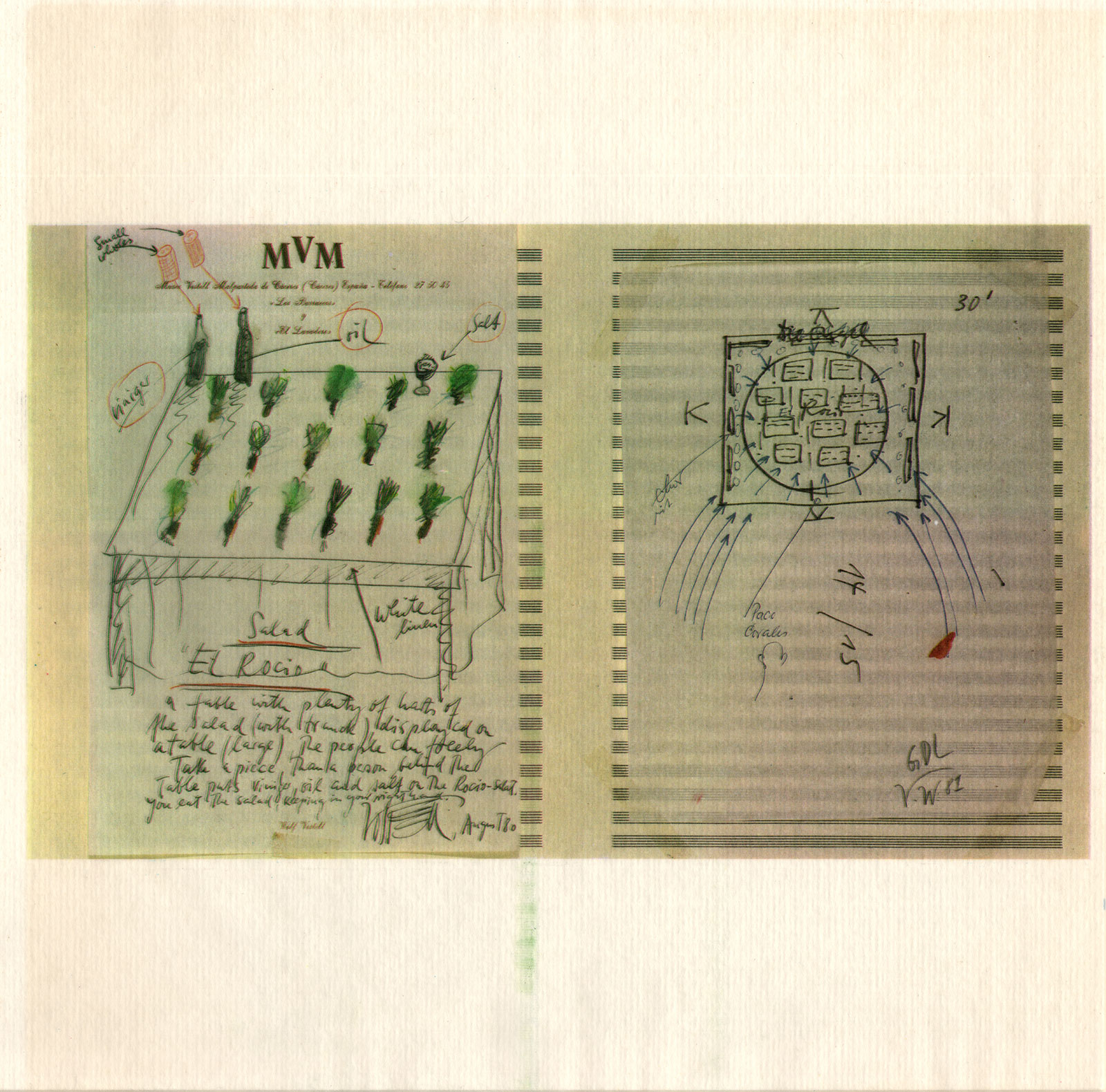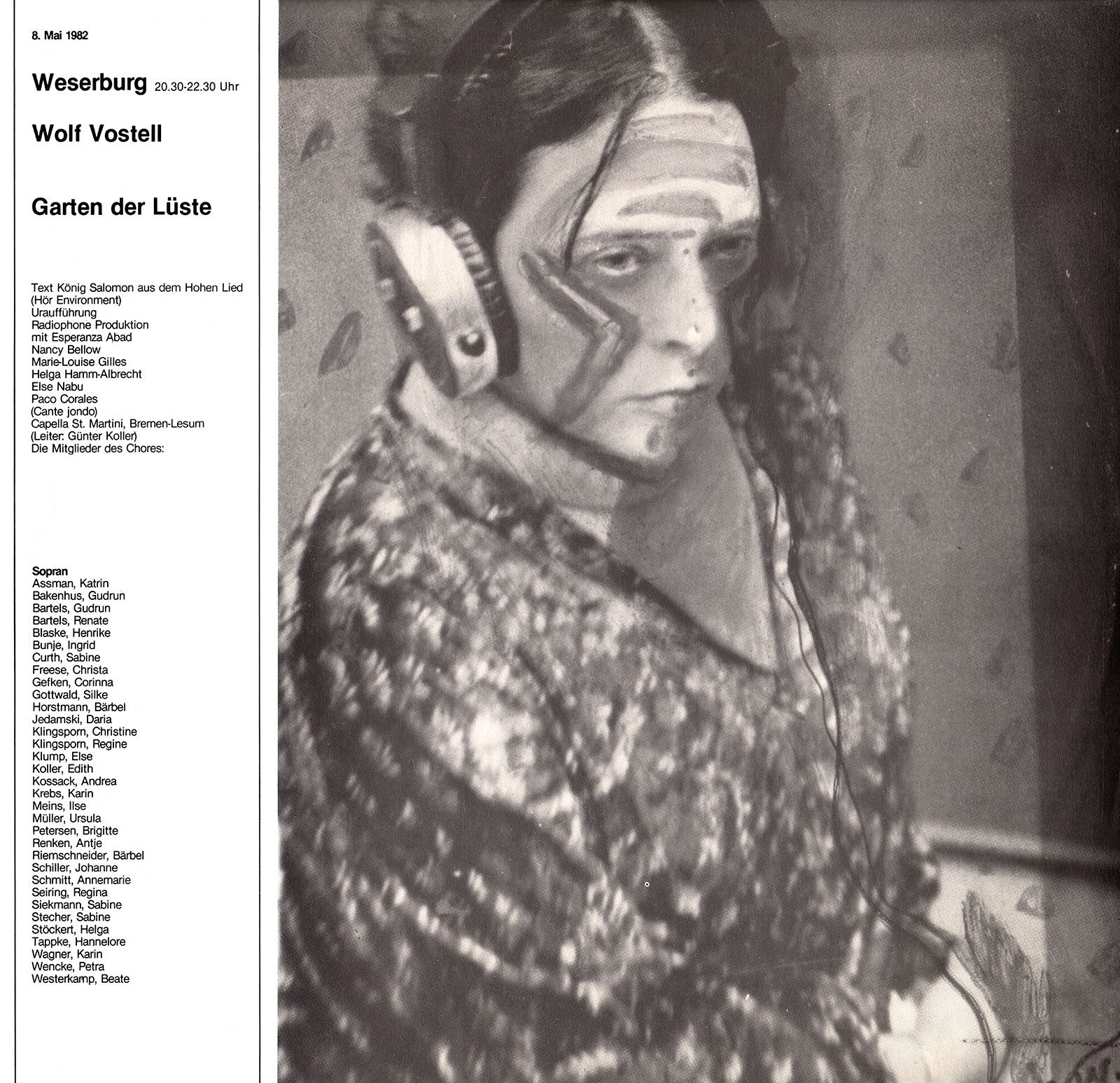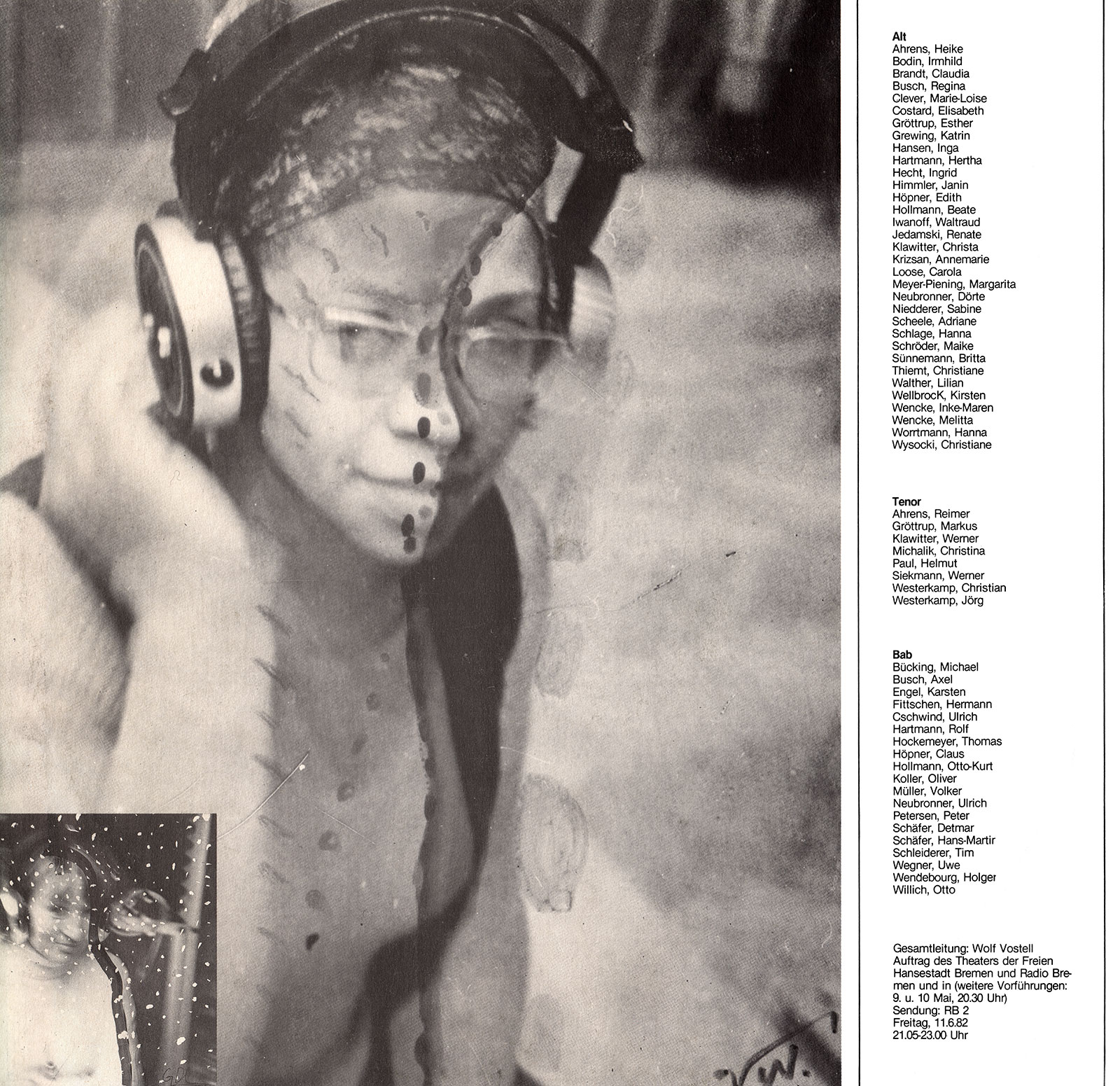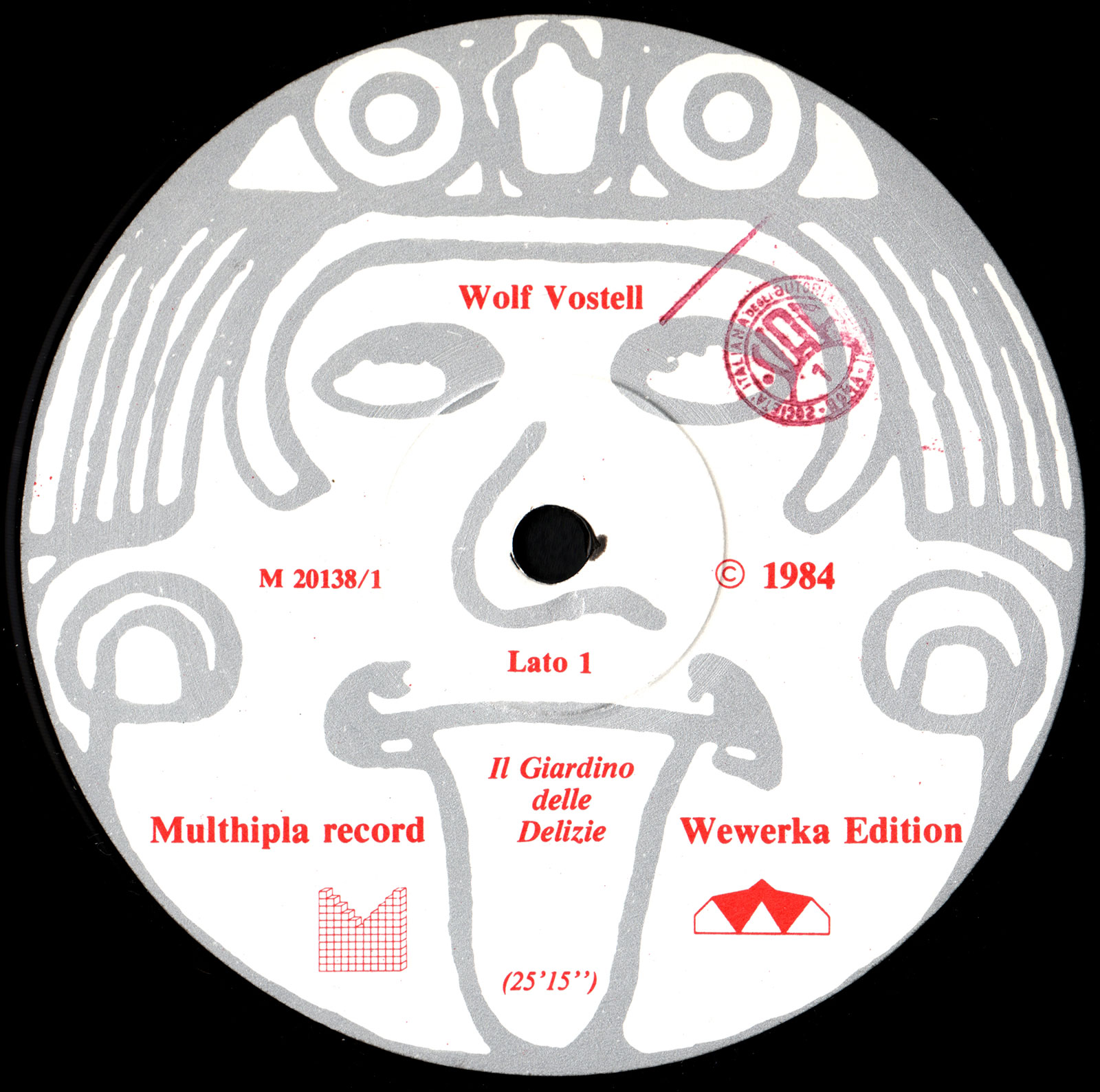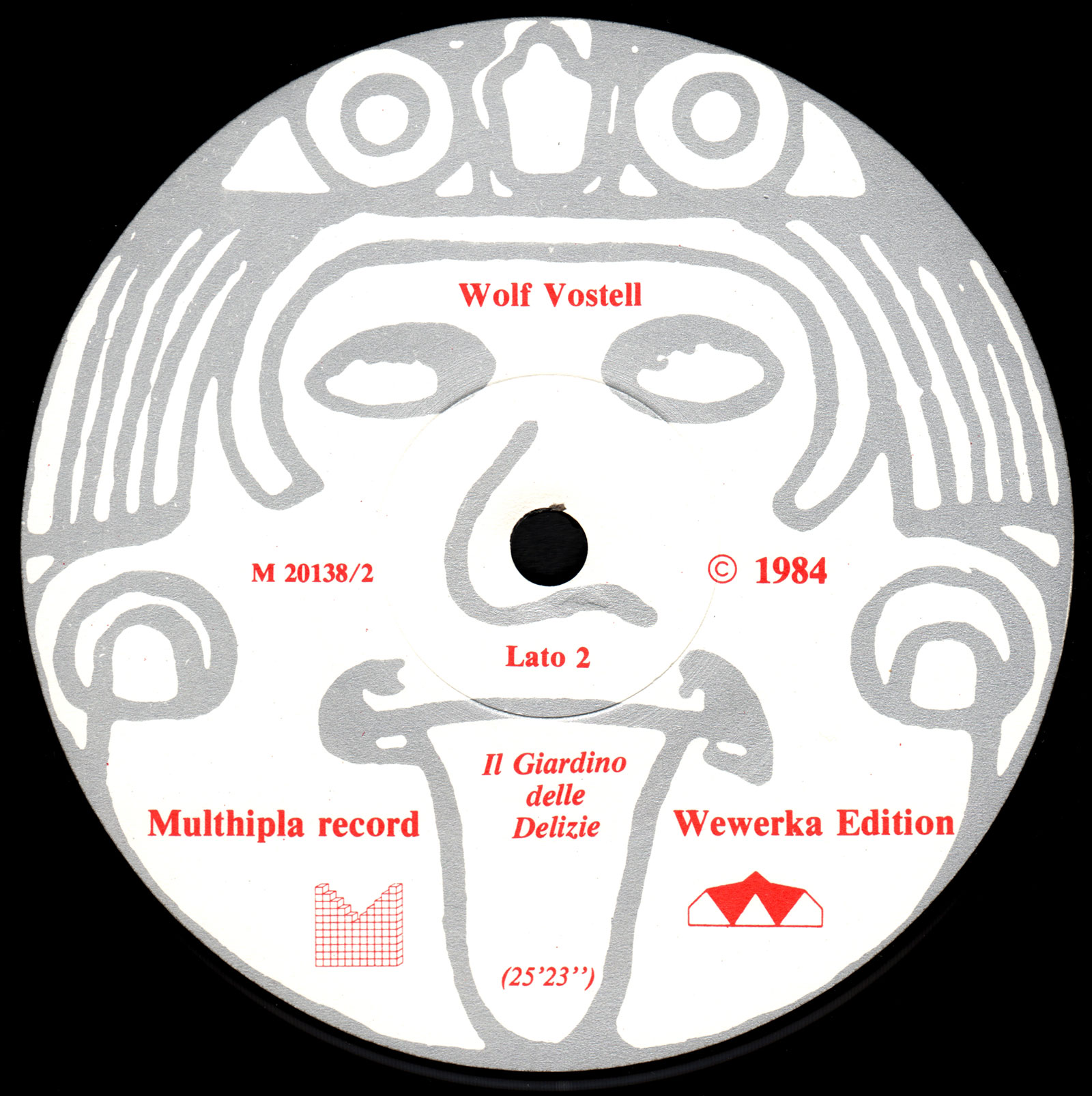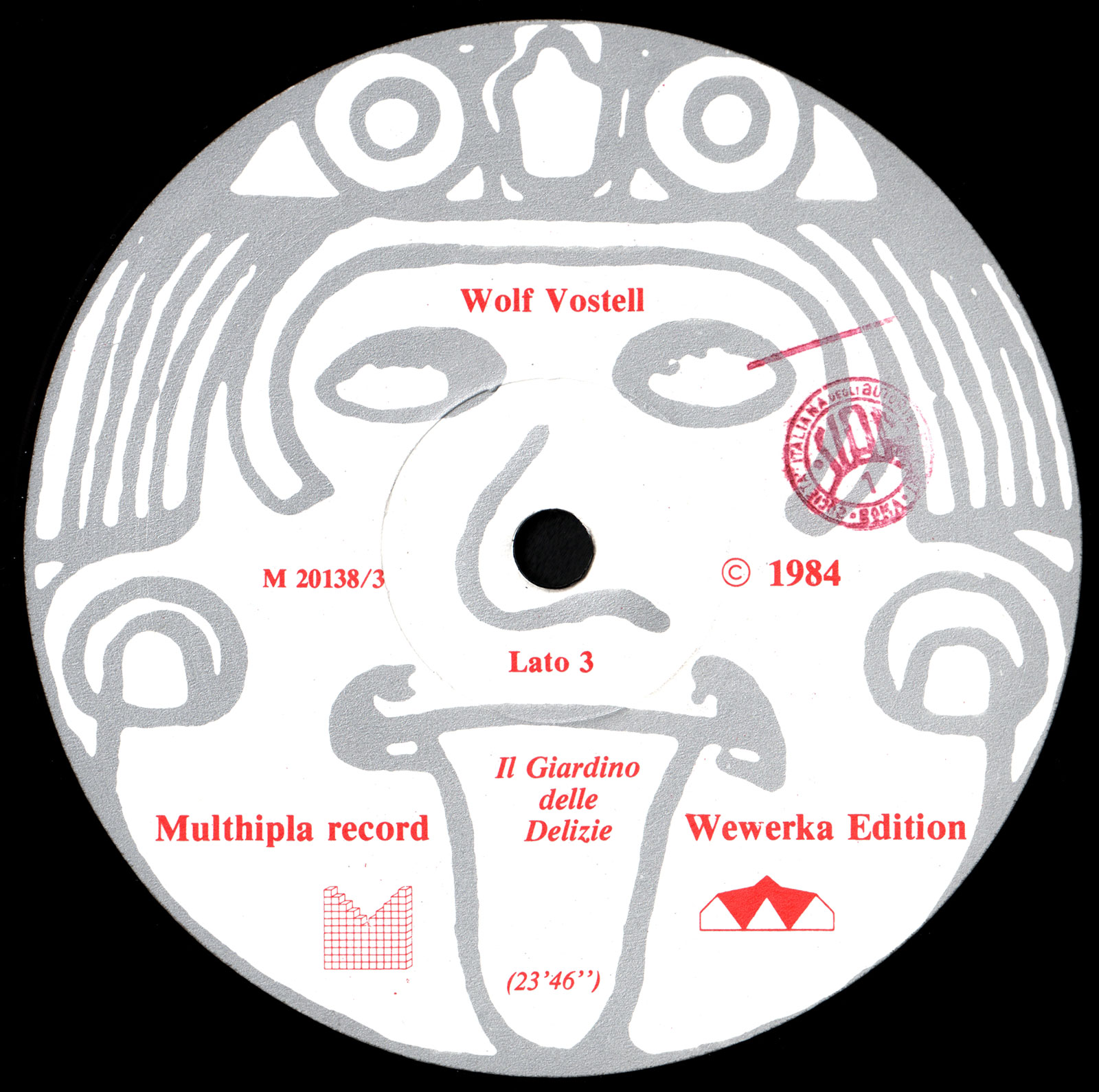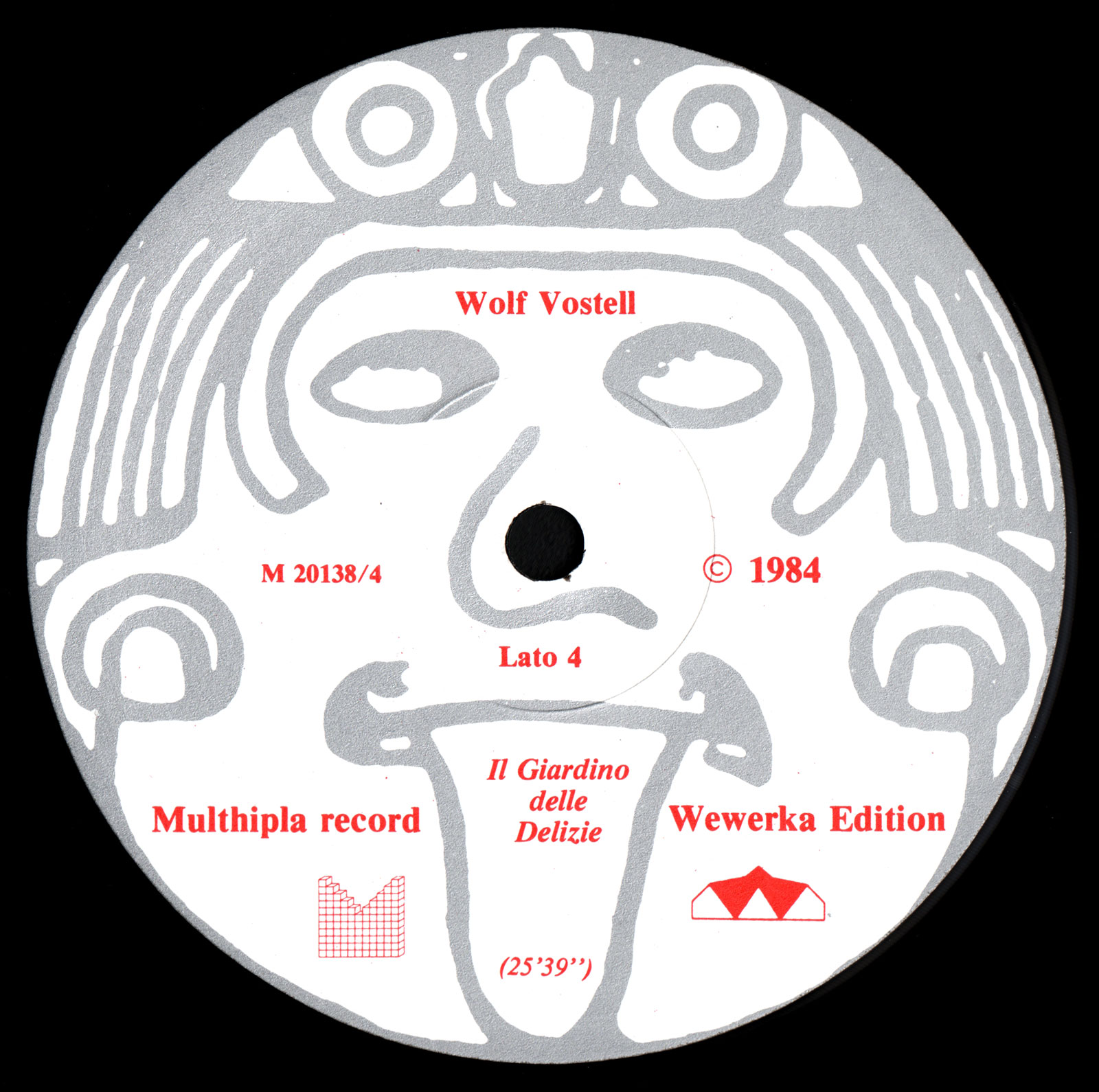I ask you to imagine the “garden of lusts” as a 120-minute opera similar to a 20-lane highway (acoustic nature), in which 20 optical-acoustic phenomena occur simultaneously in flowing traffic - superimpose, correspond in dialogue with each other, and a polyphony of voices and sounds next to electronic sounds. The variety of sounds and vowels is joined by the polyphony of seeing and, despite certain acoustic panic, forms a harmony in the poly sound.
My mixed media in the GDL can be thought of as a musical flood that resembles the daily floods of life processes, just as delays or repetitions are experienced on a daily basis. There is the concept of wild thinking, to which I add the term “WILD HEARING” with my MEDIA-PICTURE OPERA, decoll/acted vocal text to asynchronous tone sequences is to be described as a musical field continuum in its transfigurative processes as an opera happening in which the ratio of the 5 singers and all involved levels to all other levels is about the same as on a highway - where everyone keeps their lane - drives - and so the whole thing - forms the GDL.
The ANTI-harmony exists only seemingly and is refuted by the use of MUSIC AS MATERIAL /= MATERIAL AS MUSIC. Harmonic-metric-phonetic-dynamics and topics are design values in the GDL as content values for achieving heterophony. The chaos of polyphony, acoustic panic, as well as the psychology of mixed music by THE MEDIA ARTIFACTS are the content of the opera.
The liberation from prevailing compositional principles to a “REUNION OF GOUTS”, which can be understood as a break-away from fear itself and the liberation from limited hearing.
The libretto of the GDL is based on different movements from the Song of Solomon, which have a strong aura in their compressedness and have been selected by me for their sensual content. The 5 vocalists “fight” against each other for the free expression with their voices, for the mutual liberation of the voices, liberation through vocal abreaction. The fusion and simultaneity of timbres = timbres = color sound, sound material = material sound, sound event = event sound, sound mixture = mixed sound, experience acoustics = acoustic experience, action music, music action is the content of my visual opera GDL.
In this overall work of art, the stage design fulfills the variety as a visual parallel to the ever-changing acoustics and vocals of the 5 female voices.
The GARDEN OF LUSTS does not want to illustrate a story, but to be in itself a free musical flow (FLUXUS) that triggers free sensation. Triggered imagination is to pass into musical dreams rather than the understanding of a thematic act. The edification of the revelations by sound is to be described as a form of pleasure and beauty, even if individual phases are rather grief-producing clusters, such as an IMBROGLIO or a series of DIES IRAE INVERSIONS!
After the first fierce 90 minutes follow 10 minutes “amabile” with a public participation. The audience is invited to take part in the final act “EL ROCIO”, which is a celebration, through human actions such as eating-drinking-discussing. The 5 sopranos are now singing CANTE JONDO, but are gradually leaving the room of what is probably a debating crowd. Discussions in the room with the audience over the GDL and even during the GDL are part of my media opera and form a different finale on every EVENING, every day, in contrast to the compact acts of 30 minutes each, which must be performed without breaks, the discussions are the musical garden or jungle of the musical garden for eyes and ears!

